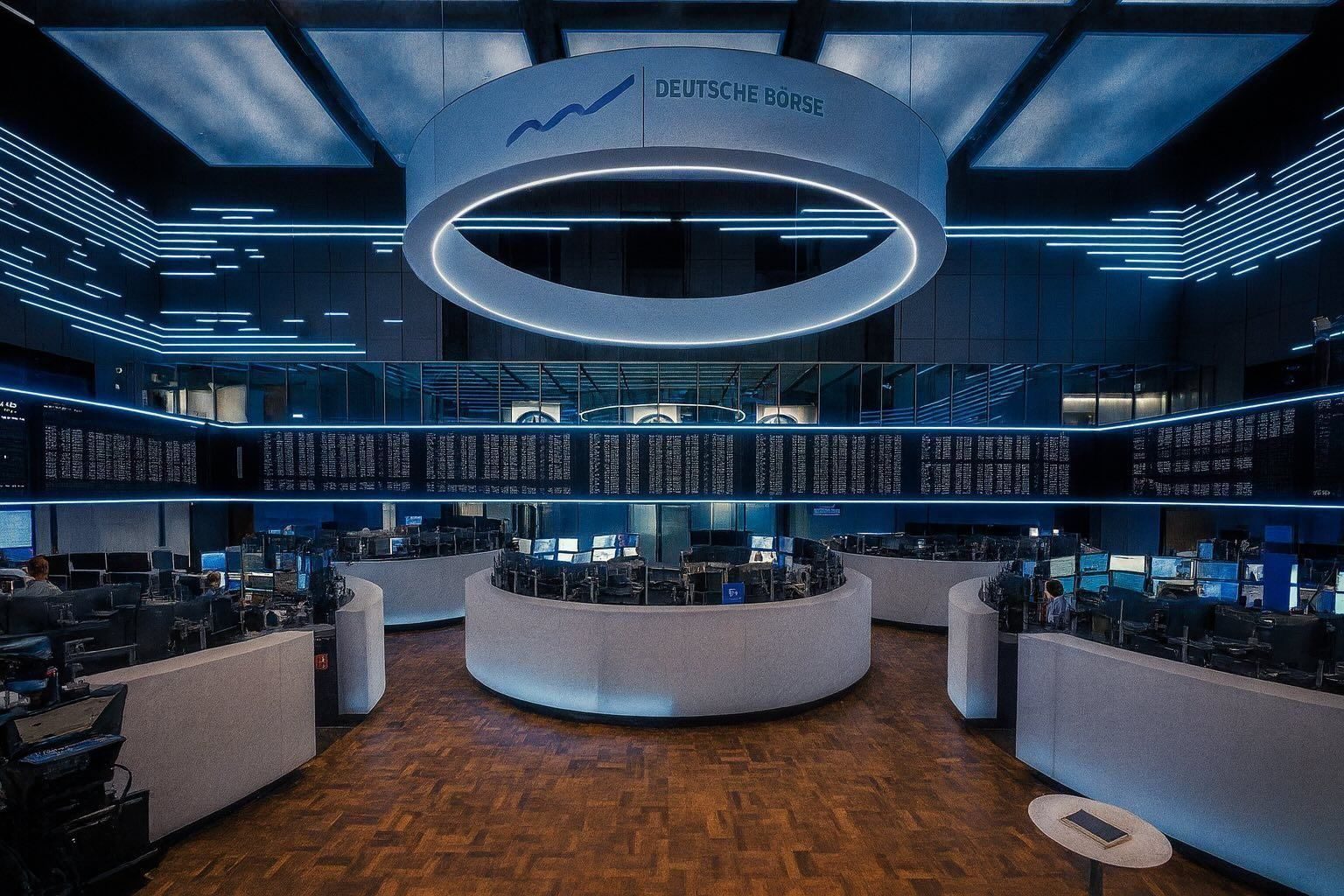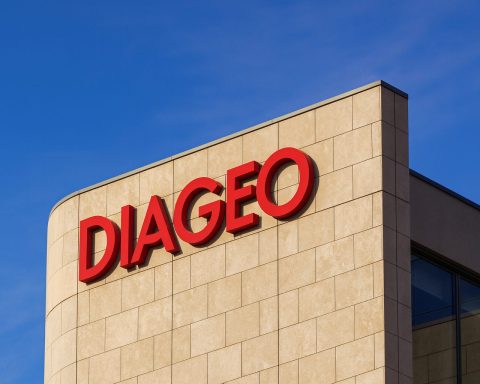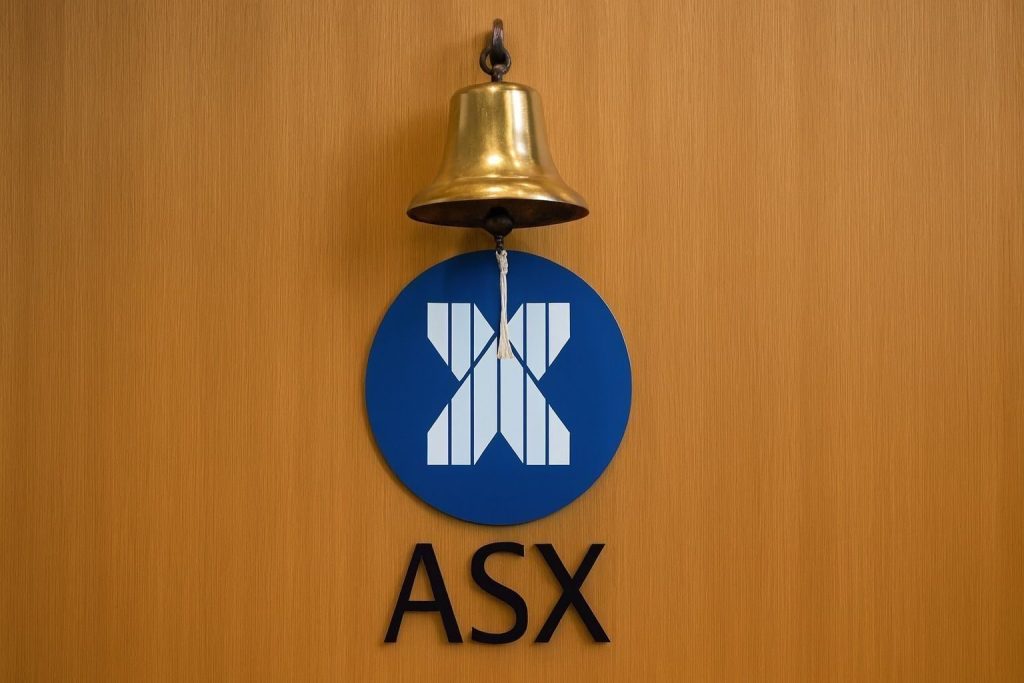The German stock market advanced again on Wednesday, 26 November 2025, as investors in Frankfurt balanced weak domestic growth against growing expectations of U.S. interest‑rate cuts and tentative signs of progress toward a Russia‑Ukraine peace deal.
At the Xetra close, Germany’s blue‑chip DAX index finished around 23,531 points, up roughly 0.3% on the day, extending a three‑session rebound from last week’s lows. The MDAX mid‑cap index added about 0.2% to 29,078 points, while the tech‑heavy TecDAX slipped marginally, closing near 3,493 points, down 0.1%. [1]
Across Europe, risk appetite remained broadly positive: the pan‑European STOXX 600 rose about 0.4% in early trading, with both Germany’s DAX and France’s CAC 40 up around 0.5% by mid‑morning before trimming gains into the close. [2]
DAX Today: Frankfurt Extends Its Three‑Day Comeback
After a bruising stretch earlier in November that pushed the DAX down to about 22,943 points – its lowest level in roughly five months – the index has now climbed back above 23,500, helped by a three‑day winning streak starting Monday. [3]
Recent closes for the DAX underline the recovery:
- Friday, 21 November: ~23,092 points (‑0.8%)
- Monday, 24 November: ~23,239 points (+0.6–0.7%), as Bayer’s rally and rate‑cut hopes triggered a relief bounce TS2 Tech+1
- Tuesday, 25 November: 23,464.63 (+0.97%), led by construction, auto and truck makers [4]
- Wednesday, 26 November:23,531.62 (+0.29%), consolidating above the 23,500 mark [5]
The move leaves the index still below its early‑November peaks above 24,700, but year‑to‑date gains are substantial: according to a new Reuters poll, the DAX is up roughly 18% in 2025 so far, outpacing many global peers. [6]
Mid‑caps and tech showed a more mixed picture:
- MDAX: 29,078.04 (+0.21%), extending its own three‑day rise as investors rotated into cyclicals and domestically focused names [7]
- TecDAX: 3,493.06 (‑0.11%), pausing after strong gains earlier this week as investors took profits in software and semiconductor stocks [8]
What Moved the German Market on 26 November 2025?
1. Fed Rate‑Cut Bets Keep Global Risk Mood Buoyant
The main global driver for German equities today was the renewed belief that the U.S. Federal Reserve will cut rates again in December.
- Softer‑than‑expected U.S. economic data on Tuesday reinforced the idea that the Fed may have to ease policy sooner, helping global stocks rally from Asia through Europe. [9]
- In Europe, a Reuters market report highlighted that the STOXX 600 was up about 0.4% by mid‑morning, with Germany’s DAX and France’s CAC 40 both ahead by around 0.5% as traders priced in a more supportive global rate backdrop. [10]
Rate‑sensitive sectors like industrials, consumer discretionary and parts of financials generally benefited in Frankfurt, while long‑duration tech stocks were more muted, mirroring the small dip in the TecDAX.
2. Peace Progress in Ukraine Eases Geopolitical Fears – but Supports Cyclicals and Defence at the Same Time
The second key theme was cautious optimism about a possible Russia‑Ukraine peace framework.
- A Reuters piece, carried via MarketScreener, noted that hopes for a breakthrough in Ukraine talks – combined with U.S. rate‑cut speculation – “drew investors to the German stock market”, putting the DAX up about half a percent to roughly 23,588 points in morning trade. [11]
- U.S. President Donald Trump has suggested that an agreement to end the war is “within reach”, even if he has stepped back from setting a hard deadline. Markets interpret that as lower long‑term geopolitical risk, particularly for Europe’s energy‑intensive and export‑driven sectors. [12]
Interestingly, this week has shown that peace hopes no longer hit defence stocks as hard as they did earlier in November. On Monday, defence names such as Rheinmetall, Hensoldt and Renk dropped sharply as peace optimism surged, dragging the sector lower. TS2 Tech
Today, however, the same Reuters/MarketScreener report highlighted defence as part of the rebound:
- Rheinmetall up around 3%
- Hensoldt up roughly 2%
- Renk gaining close to 2% [13]
That suggests investors have begun to distinguish between near‑term de‑escalation and long‑term rearmament plans, which markets still expect to support defence budgets for years.
3. Global Safe‑Haven Moves Underscore the Rate Story
While equities climbed, gold prices pushed toward a two‑week high, another sign that markets are repositioning for a more dovish Fed and potentially slower global growth. [14]
For German investors, that combination – higher equities, firmer gold, and slightly lower U.S. yields – reinforces the narrative of a “late‑cycle” environment where monetary easing supports risk assets but pockets of caution remain.
Sector and Stock Highlights in Frankfurt
Defence and Industrials: From Pain to (Partial) Relief
As noted, defence stocks turned higher today after steep declines earlier in the week:
- Rheinmetall, Hensoldt and Renk – previously under pressure as peace talks gathered pace – all notched gains in early Wednesday trading, helping lift the DAX and MDAX. [15]
The swing illustrates how headline‑driven and volatile the defence trade has become:
- When peace prospects dominate, investors worry about future order growth.
- When markets refocus on persistent geopolitical uncertainty and NATO spending commitments, the long‑term revenue story takes over again.
Real Estate: Aroundtown Slips on Earnings, Despite Solid Operations
Real estate was a notable weak spot:
- Aroundtown SA, one of the largest listed commercial property groups in the German market, fell more than 4% after publishing results for the first nine months of 2025. [16]
- The company reported stable net rental income around €886 million and only a small decline in adjusted EBITDA versus last year, but Funds From Operations (FFO I) slipped from €236 million to €221 million, and management confirmed a cautious full‑year outlook. [17]
Despite strong access to capital markets – including oversubscribed bond and perpetual‑note issues that lowered the firm’s average cost of debt – investors remain wary of office and retail exposure, especially with higher interest‑rate volatility and uncertain demand for commercial space. [18]
Consumer & Retail: Puma Rides U.S. Retail Tailwinds
Among individual movers, Puma grabbed attention:
- A Reuters markets piece pointed out that Puma shares gained nearly 2%, helped by a strong revenue beat from U.S. retailer Urban Outfitters, which improved sentiment toward athletic and lifestyle apparel stocks. [19]
The move fits into a broader pattern for the German market this month: stock‑specific stories – often from abroad – can still drive meaningful moves in individual DAX and MDAX names, even when the macro narrative is dominated by rates and geopolitics.
Heavyweights: Heidelberg Materials and Munich Re in Focus
Two DAX heavyweights also featured in Wednesday’s early trading:
- Heidelberg Materials shares edged higher and set a fresh 52‑week high around €223, building on a 6.6% surge on Tuesday that made the construction materials group the day’s top DAX performer. [20]
- Munich Re started the session slightly lower, trading just below €540 – roughly 12% under its 52‑week high but comfortably above its yearly low. With a market capitalisation near €71 billion, Munich Re remains one of the index’s key stabilisers. [21]
Meanwhile, yesterday’s session saw Heidelberg Materials, Continental and Daimler Truck among the strongest DAX names, while utilities group RWE, software giant SAP and online marketplace Scout24 lagged. [22]
Macro Backdrop: IMF Sees German Recovery, But Only Gradually
Beneath the day‑to‑day market noise, Germany’s macroeconomic picture remains challenging – and that is increasingly part of investors’ calculus.
A fresh IMF report released today makes several key points: [23]
- Germany has been the only G7 economy to record no net growth over the past two years.
- For 2025, the Fund expects only 0.2% real GDP growth, underscoring the depth of the slowdown.
- A “landmark reform” of Germany’s fiscal rules, including changes to the constitutional debt brake earlier this year, has opened space for higher infrastructure and defence spending.
- On that basis, the IMF projects real GDP growth of roughly 1.0% in 2026 and 1.5% in 2027, supported by rising public investment and gradually stronger consumption.
- Even so, aging demographics and weak productivity growth are seen as major structural headwinds, limiting long‑term potential unless Germany accelerates reforms in areas like digitalisation, labour markets and innovation.
Earlier this week, a Finimize summary of German data noted that third‑quarter GDP was flat following a small contraction beforehand, with weak exports offset only partially by firmer capital spending and modest improvement in investment. [24]
For equity markets, the takeaway is nuanced:
- Short‑term: Fiscal loosening and global rate cuts can support earnings and valuations.
- Medium‑term: Without stronger productivity and trend growth, multiple expansion may be capped, particularly in domestically focused sectors such as banks, utilities and some real estate.
Strategic View: Where Could the DAX Go Next?
Today’s market moves also come against the backdrop of a new Reuters survey of equity strategists, which paints a cautiously optimistic picture for European stocks – and for the DAX in particular. [25]
Key findings from the poll:
- The STOXX 600 is expected to rise about 11% by the end of 2026, from current levels around 570 points to roughly 623.
- Germany’s DAX is projected to climb nearly 10% to 25,500 by the end of 2026, on top of its roughly 18% gain so far this year.
- Analysts highlight that European equities still trade at a sizeable valuation discount to the U.S., even after this year’s rally.
- Europe’s lower exposure to mega‑cap AI and tech stocks cuts both ways: it helped the region lag the early‑2025 AI surge, but could allow it to outperform if an “AI bubble” deflates later in the decade.
For German investors, this outlook implies:
- Cyclicals and exporters – autos, capital goods, chemicals and industrial tech – may benefit if global growth stabilises and trade tensions ease.
- Defence and infrastructure‑linked names stand to gain from higher German and European public spending.
- Banks and insurers could continue to ride higher rates and improved loan growth, as long as credit quality holds up.
Of course, these are median forecasts, not guarantees. The path to those targets will likely remain volatile, pulled around by U.S. monetary policy, Ukraine peace developments, and domestic political debates over how aggressively Berlin should spend its new fiscal room.
Big Picture for Investors in German Stocks
Putting today’s session in context, several themes stand out:
- Markets are trading the global rate cycle more than the domestic data.
Weak German growth numbers and soft business sentiment haven’t stopped the DAX from grinding higher whenever the Fed looks more dovish or global risk appetite improves. [26] - Geopolitics is shifting from pure risk to a two‑sided story.
Peace progress in Ukraine still matters for energy, defence and cyclicals – but investors are increasingly separating short‑term de‑escalation from long‑term commitments to defence and infrastructure, which can support earnings even in a calmer world. [27] - Stock‑specific catalysts remain powerful.
From Bayer’s stroke‑drug breakthrough earlier this week to today’s moves in defence, real estate and consumer names, individual corporate news continues to drive meaningful dispersion across the DAX, MDAX and TecDAX. TS2 Tech+1 - Valuations are no longer “cheap everywhere”, but Europe – and Germany – still look reasonable versus the U.S.
The latest strategist poll underscores that low relative valuations and higher expected public investment are central to the bull case for German equities into 2026. [28]
What to Watch Next
Over the coming days and weeks, traders in Frankfurt will be watching:
- The Federal Reserve’s December meeting and Beige Book, for confirmation that another rate cut is indeed on the table. [29]
- Further details on Ukraine peace talks, which could keep swinging defence and infrastructure stocks. [30]
- Follow‑through on the IMF’s recommendations, including how Germany’s government prioritises infrastructure, digitalisation and defence in its budget plans. [31]
- Additional earnings and guidance from DAX heavyweights, particularly exporters sensitive to global demand and tariffs.
For now, 26 November 2025 will go down as another constructive day for German equities: the DAX extended its rebound, mid‑caps inched higher, and even previously bruised sectors like defence found fresh buyers – all against the backdrop of a still‑fragile domestic economy.
This article is for informational purposes only and does not constitute investment advice. Investing in financial markets involves risk, including the possible loss of capital.
References
1. www.investing.com, 2. www.reuters.com, 3. www.investing.com, 4. www.aa.com.tr, 5. www.investing.com, 6. www.reuters.com, 7. www.investing.com, 8. www.investing.com, 9. www.reuters.com, 10. www.reuters.com, 11. www.marketscreener.com, 12. www.marketscreener.com, 13. www.marketscreener.com, 14. www.reuters.com, 15. www.marketscreener.com, 16. www.marketscreener.com, 17. www.tradingview.com, 18. www.tradingview.com, 19. www.reuters.com, 20. www.investing.com, 21. www.welt.de, 22. www.investing.com, 23. www.reuters.com, 24. finimize.com, 25. www.reuters.com, 26. finimize.com, 27. www.marketscreener.com, 28. www.reuters.com, 29. www.tradingview.com, 30. www.marketscreener.com, 31. www.reuters.com







